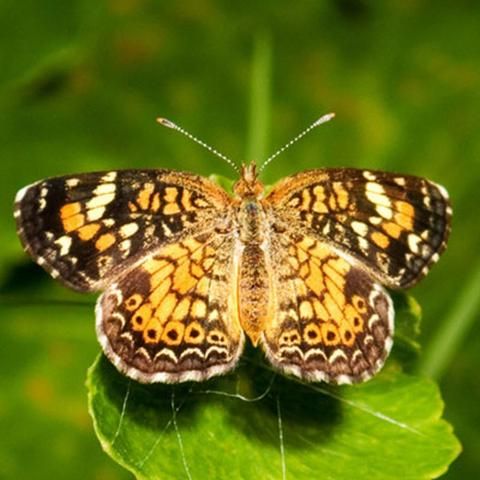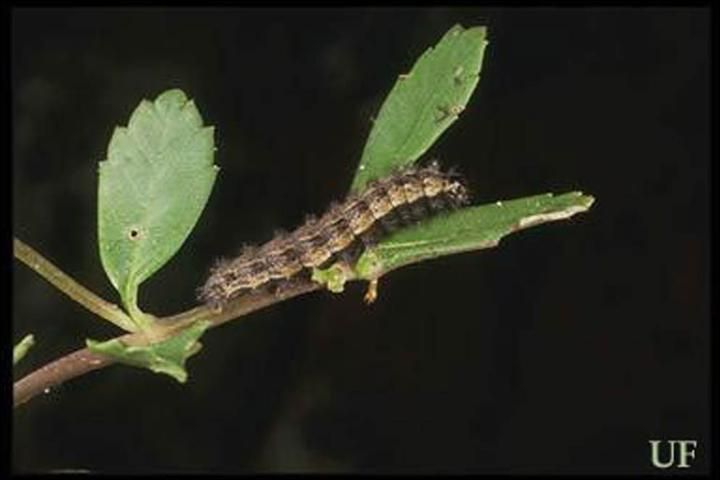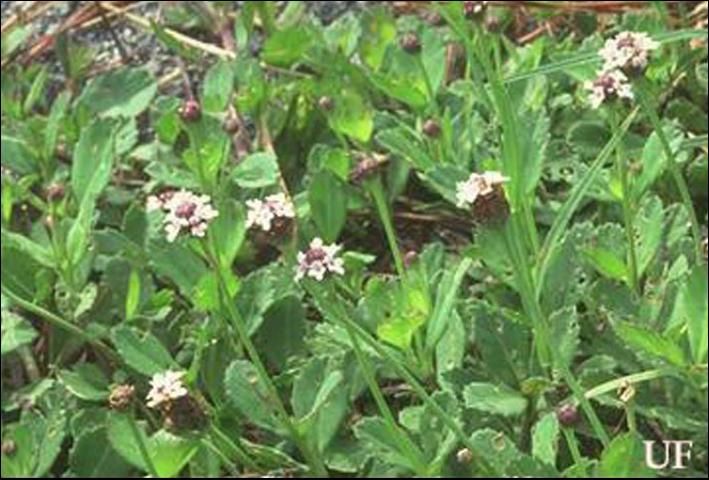The Featured Creatures collection provides in-depth profiles of insects, nematodes, arachnids and other organisms relevant to Florida. These profiles are intended for the use of interested laypersons with some knowledge of biology as well as academic audiences.
Introduction
The phaon crescent, Phyciodes phaon (Edwards), is a common southern crescent that frequents moist open areas. It resembles the pearl crescent that is found in the same areas but differs by the more checkered fringe on the wings.

Credit: Robert Lord Zimlich
Distribution
The phaon crescent is found from coastal North Carolina throughout the southern parts of the Gulf states to southern Texas and westward to southern California. It strays north to Iowa and Nebraska.
Description
The wingspread is 2.3 to 3.2 cm. The upper surface of the wings is brown with orange checkered spots and the front wings have a median white to yellowish band (also visible on the undersides). The undersides of the wings are orange and light tan with blackish brown markings.
Larvae are variable in color from olive to brown with dark subdorsal bands and white lateral bands. Both thoracic and abdominal segments have transverse bands of scoli, each of which bears brown setae.

Credit: Jerry F. Butler, University of Florida
Life Cycle
There are several flights (early spring to late fall) in the northern part of the range and nearly year-round in peninsular Florida. Males patrol open areas near host plants for females. Mating occurs primarily during mid-day. Eggs are laid in clusters on the undersides of leaves of the fogfruit host plants, Phyla (=Lippia) spp. (Verbenaceae). The common host throughout much of Florida is turkey tangle fogfruit, Phyla nodiflora (L.) Green, also known as capeweed, mat plant, creeping charlie, and match heads.

Credit: Donald W. Hall, University of Florida
Selected References
Daniels J. 2003. Butterflies of Florida. Adventure Publications. Cambridge, Minnesota. 256 pp.
Glassberg J, Minno MC, Calhoun JV. 2000. Butterflies Through Binoculars: A Field, Finding, and Gardening Guide to Butterflies in Florida. Oxford University Press. New York. 242 pp.
Minno MC, Emmel TC. 1993. Butterflies of the Florida Keys. Scientific Publishers. Gainesville, Florida.
Minno MC, Butler JF, Hall DW. 2005. Florida Butterfly Caterpillars and their Host Plants. University Press of Florida. Gainesville, Florida. 341 pp.
Opler PA, Krizek GO. 1984. Butterflies East of the Great Plains. The Johns Hopkins University Press. Baltimore, MD.
Opler PA, Malikul V. 1998. Eastern Butterflies. Peterson Field Guide Series. Houghton Mifflin Company. New York.
Scott JA. 1986. The Butterflies of North America. Stanford University Press. Stanford, CA.
Wagner DL. 2005. Caterpillars of Eastern North America. Princeton University Press. Princeton, New Jersey. 512 pp.